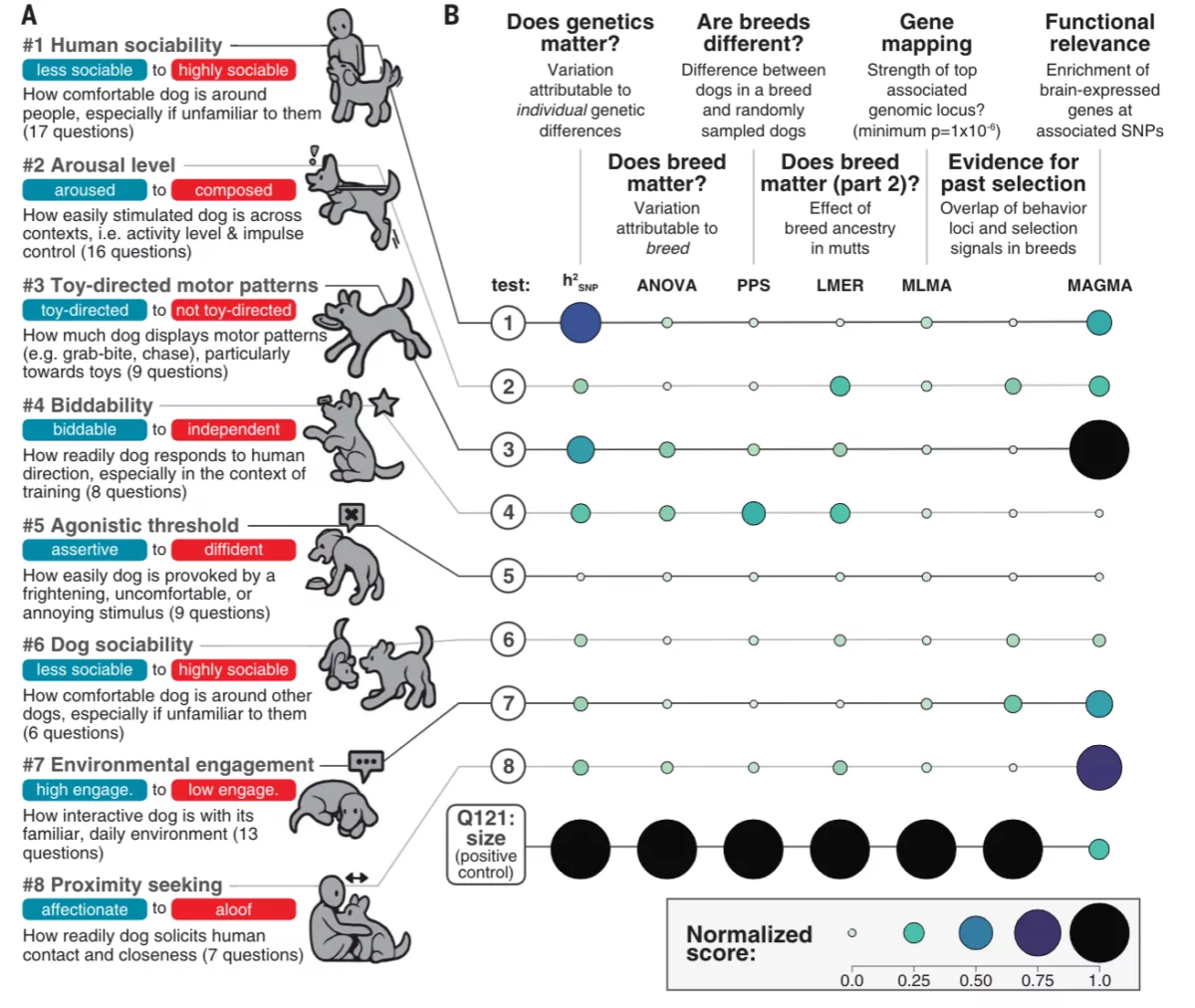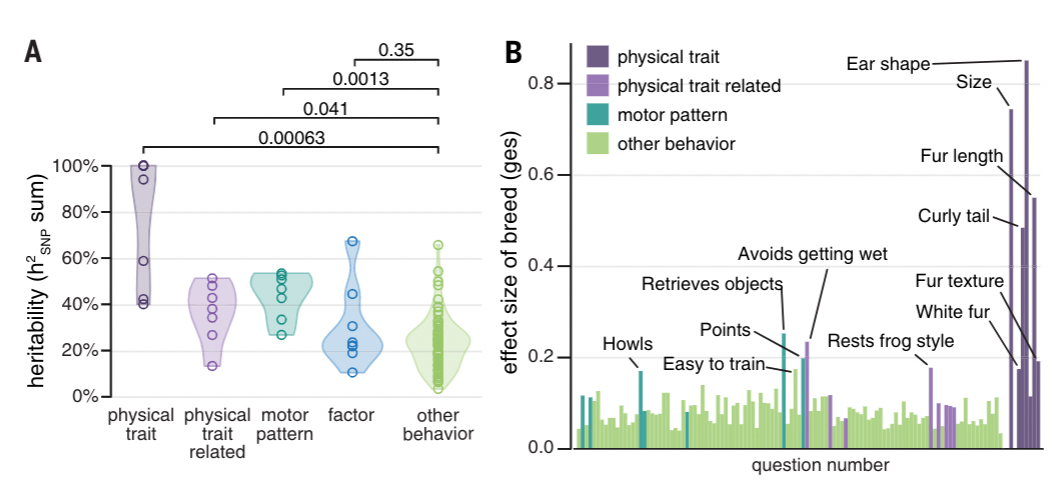Do you rate your golden retrievers high on the scale for friendliness to strangers because they’ve been bred to demonstrate that trait or because you house an internal bias that tells you golden retrievers are friendly? These are precisely the types of questions that researchers are answering by utilizing modern, genome-wide sequencing information to better understand the association between genes and traits in dogs. In a new paper published in Science, Morrill et al. applied low-pass sequencing in a diverse population of dogs to power GWAS studies, drawing clear conclusions about the heritability of both the physical traits we know separate dog breeds and the more complicated behavioral traits like human sociability and agonistic behavior.
A better study design for a diverse population
The researchers aimed to explore the complicated relationship between breed and behavior in dogs by asking owners of the dogs a wide array of questions about physical traits and behavioral tendencies. They then looked for trends and connections in the genetic data. Unfortunately, survey data of this sort comes with a set of biases. Humans are prone to attribute many stereotypes to dogs based on their breed. We’ve all heard the stereotypes that golden retrievers are family dogs and pit bulls are dog-aggressive dogs. Therefore, to mitigate these biases, the researchers used many mixed breed “mutt” dogs. By utilizing dogs that were unable to be categorized into specific breeds by humans, answers to questions about a dog’s tendencies could better reflect an unbiased response. This posed another issue for analyzing the genetic data. While several genetic studies have been conducted in dogs, most of them are focused on purebred individuals and using array data. Because mutts have shorter runs of homozygosity and linkage disequilibrium that decays more rapidly than purebred dogs, genotyping arrays designed with sufficient marker density for purebred dog studies miss much of the genetic variation in mutts. To solve this problem, the researchers used Gencove’s low-pass sequencing and analysis platform to genotype 1,715 dogs for more than 32 million SNPs. They then performed several GWAS studies to look at a variety of physical and behavioral traits and the influence of genetics and breeding on those traits.

